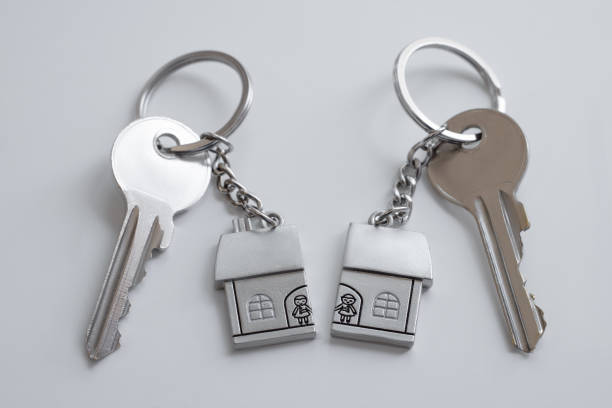Understanding Shared Ownership
Homeownership is a dream for many, but with rising property prices, the path to owning a home outright has become increasingly challenging. This is where shared ownership comes in—a government-backed scheme designed to make homeownership more accessible, especially for first-time buyers and those who may struggle to afford a property on the open market. In this blog post, we’ll explore what shared ownership is, how it works, its benefits and drawbacks, and whether it could be the right option for you.
What is Shared Ownership?
Shared ownership is a scheme that allows you to buy a share of a property—usually between 25% and 75%—and pay rent on the remaining share owned by a housing association or developer. The scheme is particularly popular in the UK, where it has helped many people step onto the property ladder who might not have been able to otherwise.
The idea behind shared ownership is to reduce the financial burden of buying a home outright. Instead of needing to secure a mortgage for the full value of the property, you only need to borrow the amount needed for your share. This makes the initial purchase more affordable, as both the deposit and monthly mortgage payments are lower.
How Does Shared Ownership Work?
Shared ownership follows a straightforward process, but there are specific steps and criteria involved:
- Eligibility Criteria:
- To qualify for shared ownership, you generally need to meet certain criteria. These can vary depending on the region and the specific housing association but typically include:
- Being a first-time buyer, or if you’ve previously owned a home, you can no longer afford to buy one now.
- Having a household income of £80,000 or less per year (or £90,000 in London).
- Being unable to afford a suitable home on the open market.
- Some schemes may also prioritize certain groups, such as key workers or people with local connections.
- To qualify for shared ownership, you generally need to meet certain criteria. These can vary depending on the region and the specific housing association but typically include:
- Choosing Your Share:
- When you buy a shared ownership property, you decide what percentage of the home you want to purchase. This share typically ranges from 25% to 75%. The remaining share remains with the housing association, on which you pay rent.
- Mortgages and Deposits:
- You’ll need to secure a mortgage for the portion of the property you’re purchasing. The deposit required is usually lower than that for a full ownership property, as it’s based on the value of your share rather than the total property value. For example, if you’re buying a 50% share of a £200,000 property, you might only need a 5% deposit on the £100,000 share (£5,000).
- Paying Rent:
- In addition to your mortgage, you’ll pay rent to the housing association for the share of the property that you don’t own. The rent is typically set at a discounted rate, often around 2.75% of the value of the share owned by the housing association.
- Service Charges:
- As with many leasehold properties, you’ll likely need to pay service charges. These cover the cost of maintaining communal areas, building insurance, and other shared services. It’s important to factor these into your overall housing costs.
- Staircasing:
- One of the key features of shared ownership is the ability to “staircase,” meaning you can buy additional shares in your property over time. This allows you to gradually increase your ownership share until you potentially own the property outright. Each time you staircase, the rent you pay on the remaining share decreases proportionally.
- Selling Your Shared Ownership Property:
- If you decide to sell your shared ownership property, the housing association usually has the right to buy back your share first or find a buyer who qualifies for shared ownership. This is known as a “right of first refusal.” If they don’t exercise this right, you can sell your share on the open market. The sale price will be based on the current market value of your share, which means you could make a profit if property values have risen.
Benefits of Shared Ownership
Shared ownership offers several advantages, particularly for those who find it challenging to afford a home through conventional means:
- Lower Upfront Costs:
- The most significant benefit of shared ownership is the reduced initial cost of buying a home. With a lower deposit requirement and a smaller mortgage, shared ownership makes it easier for first-time buyers and those with limited savings to get onto the property ladder.
- Affordability:
- Because you only need to secure a mortgage for a portion of the property, your monthly mortgage payments are lower than they would be if you bought the home outright. Additionally, the rent you pay on the remaining share is often set at a below-market rate, making the overall cost of living more manageable.
- Pathway to Full Ownership:
- Shared ownership offers a clear pathway to full homeownership through staircasing. As your financial situation improves, you can gradually buy more shares in the property until you own it outright, at which point you’ll no longer need to pay rent.
- Security of Homeownership:
- Unlike renting, shared ownership gives you the security and stability of owning a home. You have the legal rights and responsibilities of a homeowner, including the ability to decorate, renovate, and sell your property (subject to the housing association’s terms).
- Equity Growth:
- If property values rise, the value of your share will also increase, meaning you could benefit from capital growth when you decide to sell. This can help you build equity over time, which can be used to fund future home purchases.
Drawbacks of Shared Ownership
While shared ownership has many benefits, it’s not without its downsides. Here are some potential drawbacks to consider:
- Rent and Service Charges:
- In addition to your mortgage, you’ll need to pay rent on the portion of the property you don’t own, as well as service charges. These costs can add up, making your monthly housing expenses higher than anticipated. It’s essential to budget carefully and ensure you can afford these ongoing costs.
- Staircasing Costs:
- While staircasing allows you to increase your ownership share, it comes with additional costs. Each time you buy an additional share, you’ll need to pay for a property valuation, legal fees, and possibly mortgage arrangement fees. If property values have risen since your initial purchase, the cost of buying more shares could be higher than expected.
- Limited Property Choice:
- Shared ownership properties are often new builds or specific homes allocated for the scheme by housing associations. This can limit your choice of location and type of property, meaning you may need to compromise on your ideal home.
- Leasehold Restrictions:
- Most shared ownership properties are leasehold, meaning you don’t own the land the property is built on. Leasehold properties come with certain restrictions, such as needing permission to make significant alterations or having to extend the lease as it shortens over time. Lease extension can be costly, especially if the lease has less than 80 years remaining.
- Selling Complications:
- When you decide to sell your shared ownership property, the housing association often has the right to buy back your share or find a new buyer. This process can take longer than selling a fully owned property on the open market. Additionally, if property values have fallen, you could end up selling your share for less than you paid.
Is Shared Ownership Right for You?
Shared ownership can be an excellent way to get onto the property ladder if you’re struggling to afford a home on the open market. However, it’s important to weigh the benefits against the potential drawbacks and consider your long-term financial goals.
Before committing to shared ownership, take the time to:
- Understand the Costs: Make sure you fully understand all the costs involved, including rent, service charges, and the expenses associated with staircasing and selling the property.
- Consider Your Future Plans: Think about your long-term goals and whether shared ownership aligns with them. For example, if you plan to staircase to full ownership, ensure you’re financially prepared for the additional costs.
- Seek Professional Advice: Consult with a financial advisor or mortgage broker who can help you understand your options and guide you through the process.
Conclusion
Shared ownership is a valuable scheme that has helped many people achieve their dream of homeownership. By offering a more affordable entry point into the property market and the potential to increase your ownership share over time, it provides a flexible and accessible route to owning your home. However, like any major financial decision, it’s essential to fully understand the implications and ensure that shared ownership is the right choice for your individual circumstances. With careful planning and consideration, shared ownership can be a stepping stone to securing your place on the property ladder.










